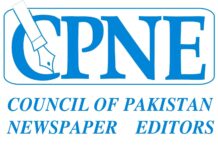Cancer is an insidious disease, alarmingly shaping the global health crisis as it claims millions of lives each year. Responsible for one in six deaths worldwide, cancer cases are projected to reach 26 million annually by 2030, with developing countries shouldering 75% of this burden. Over 70% of cancer deaths occur in low- and middle-income countries (LMICs), where survival rates hover at just 30%. The reasons are manifold—inadequate access to early detection and treatment services, lack of awareness, and societal taboos, to name a few.
In Pakistan alone, 186,701 new cases and 128,813 deaths are reported annually. Breast cancer is the most common, accounting for 16.5% of cases, followed by lip and oral cavity cancers (8.6%) and lung cancer (5.1%). Women bear a disproportionately high burden, with breast cancer’s age-standardised incidence rate at 34.2 per 100,000, while men are most affected by lip and oral cavity cancers, with a rate of 9.5 per 100,000.
Globally, the economic impact of cancer is staggering, exceeding $1.16 trillion annually in direct healthcare costs and lost productivity. To reduce costs and effectively monitor and address this widespread phenomenon, the World Health Organization’s International Agency for Research on Cancer (IARC) has emphasised the urgent need for enhanced prevention, services, and research to tackle this escalating crisis.
Various factors contribute to this pressing health crisis and demand immediate attention. From environmental hazards to limited access to healthcare, multiple factors explain why cancer continues to prevail in the country. Industrialisation, unregulated waste disposal, and high levels of air and water pollution expose the population to hazardous chemicals and carcinogens, directly linking environmental pollution to various cancers, including lung and skin cancer. Unregulated use of tobacco products such as smoking, paan, and gutka has resulted in a very high prevalence of head and neck cancers, especially in southern Pakistan.
Genetic predisposition is another significant factor. In Pakistan, a large number of marriages occur between close relatives due to cultural and societal norms. This increases the likelihood of inherited genetic mutations, raising the incidence of certain cancers, such as breast, ovarian, and colon cancer.
Despite increased efforts, there still remains a widespread lack of awareness about cancer prevention, screening, and early detection. Unfortunately, symptoms are often insidious. Many patients are unaware of early signs, leading to delayed presentation to the physician, which in turn results in diagnosis at an advanced stage, significantly affecting outcomes and survival.
Globally, the economic impact of cancer is staggering, exceeding $1.16 trillion annually in direct healthcare costs and lost productivity. To reduce costs and effectively monitor and address this widespread phenomenon, the World Health Organization’s International Agency for Research on Cancer (IARC) has emphasised the urgent need for enhanced prevention, services, and research to tackle this escalating crisis.
Inadequate healthcare infrastructure is a major factor impacting cancer patients. Limited access to healthcare services, a shortage of medical professionals, and an insufficient number of specialised cancer treatment centres—particularly in rural areas—severely restrict patients from receiving timely and effective care. Many face long waiting times, missed or delayed diagnoses, and limited access to essential treatments such as chemotherapy or radiotherapy. The lack of accessibility and affordability forces a significant portion of the population to either forgo treatment or rely on alternative, often ineffective, methods, resulting in untimely and preventable deaths.
In light of this situation, a critical question arises: How do we change this for ourselves and future generations? The answer lies in increasing public awareness about cancer, its symptoms, and the importance of early detection. National awareness and counselling campaigns, particularly in rural areas, are essential for educating communities about the health risks associated with consanguineous marriages and promoting lifestyle choices that reduce cancer risk.
Early screenings, timely detection, and prompt treatment are indispensable for improving survival rates and reducing the burden of advanced-stage cancers. Diagnostic tools such as mammography for breast cancer, colonoscopy for colorectal cancer, and Pap smear for cervical cancer offer effective ways to detect malignancies. Proactive measures not only improve treatment success rates but also alleviate the strain on health systems dealing with advanced cases.
Institutions such as The Aga Khan University Hospital (AKUH) have stepped up to address this challenge through awareness campaigns, community outreach programmes, and education initiatives. These efforts empower individuals to prioritise early detection, which can significantly improve health outcomes and reduce the rate of untimely deaths.
However, this is a battle that no institution can fight alone. Collaborative efforts, increased access to healthcare, and a sustained commitment to awareness are essential for creating a healthier future for generations to come.























